trebuie să fii logat
-
întoarce-teX
-
Componente
-
-
Category
-
Semiconductoare
- Diode
- tiristoare
- Module izolate electric
- Redresoare în punte
-
Tranzistoare
- tranzistoare GeneSiC
- Module MOSFET Mitsubishi SiC
- Module MOSFET STARPOWER SiC
- Module MOSFET ABB SiC
- Module IGBT de la MITSUBISHI
- Module de tranzistori MITSUBISHI
- module MITSUBISHI MOSFET
- Module de tranzistori ABB
- Module IGBT de la POWEREX
- Module IGBT - de la INFINEON (EUPEC)
- Elemente semiconductoare din carbură de siliciu
- Accesați subcategoria
- Șoferii
- Blocuri de putere
- Accesați subcategoria
- Traductoare de curent și tensiune LEM
-
Componente pasive (condensatori, rezistențe, siguranțe, filtre)
- Rezistoare
-
Siguranțe
- Siguranțe miniaturale pentru sisteme electronice din seria ABC și AGC
- Siguranțe tubulare cu acțiune rapidă
- Inserții întârziate cu caracteristici GL/GG și AM
- Legături sigure ultra-rapide
- Siguranțe standard britanice și americane cu acțiune rapidă
- Siguranțe cu acțiune rapidă standard european
- Siguranțe de tracțiune
- Siguranțe de înaltă tensiune
- Accesați subcategoria
-
Condensatoare
- Condensatoare pentru motoare
- Condensatoare electrolitice
- Condensatori Icel Film
- Condensatoare de putere
- Condensatoare pentru circuite DC
- Condensatoare de compensare a puterii
- Condensatoare de înaltă tensiune
- Condensatoare pentru încălzire prin inducție
- Condensatoare de impulsuri
- Condensatoare DC LINK
- Condensatoare pentru circuite AC/DC
- Accesați subcategoria
- Filtre anti-interferențe
- Supercondensatoare
- Protecție la supratensiune
- Filtre de emisii revelatoare TEMPEST
-
Descărcător de supratensiune
- Descărcătoare de supratensiune pentru rețeaua de curent alternativ
- Descărcătoare de supratensiune pentru rețea de curent continuu
- Limitatoare de joasă tensiune ALVL
- Limitatoare de joasă tensiune PG
- Descărcătoare de trăsnet pentru rețele de curent alternativ până la 1000V
- Dispozitive de măsurare
- Accesați subcategoria
- Accesați subcategoria
-
Relee și Contactoare
- Teoria releelor și contactoarelor
- Relee cu stare solidă trifazată CA
- Relee cu stare solidă DC
- Regulatoare, sisteme de control și accesorii
- Porniri ușoare și contactoare inversoare
- Relee electromecanice
- Contactoare
- Comutatoare rotative
-
Relee cu stare solidă CA monofazate
- Relee cu stare solidă CA monofazate Seria 1 | D2425 | D2450
- Relee semifazate CA monofazate, seria CWA și CWD
- Relee semifazate CA monofazate seriile CMRA și CMRD
- Relee cu stare solidă CA monofazate Seria PS
- Relee cu stare solidă AC seria duble și cvadruple D24 D, TD24 Q, H12D48 D
- Relee monofazate din seria GN
- Relee cu stare solidă CA monofazate Seria CKR
- Relee monofazate pentru șină DIN AC SERIA ERDA și ERAA
- Relee AC monofazate pentru curent de 150A
- Relee duble cu stare solidă integrate cu radiator pe șină DIN
- Accesați subcategoria
- Relee cu stare solidă imprimabile monofazate CA
- Relee de interfață
- Accesați subcategoria
- Miezuri și alte componente inductive
- Radiatoare, Varistoare, Protectie termica
- Fani
- Aer conditionat, Accesorii tablou, Racitoare
-
Baterii, încărcătoare, surse de alimentare tampon și convertoare
- Baterii, încărcătoare - descriere teoretică
- Baterii litiu-ion. Baterii personalizate. Sistem de management al bateriei (BMS)
- baterii
- Incarcatoare de baterii si accesorii
- UPS și surse de alimentare tampon
- Convertoare si accesorii pentru fotovoltaice
- Stocarea energiei
- Pile de combustibil cu hidrogen
- Celule litiu-ion
- Accesați subcategoria
-
Automatizare
- Elevatoare Spiralift
- Piese pentru drone Futaba
- Întrerupătoare de limită, Micro întrerupătoare
- Senzori, traductoare
- Pirometre
- Contoare, relee de timp, contoare de panou
- Echipament industrial de protectie
- Semnale luminoase și sonore
- Cameră termică
- Afișaje LED
- Butoane și întrerupătoare
- Accesați subcategoria
-
Cabluri, fire Litz, Conduite, Conexiuni flexibile
- Firele
- Presetupe și manșoane
- Chipurile
-
Cabluri pentru aplicatii speciale
- Cabluri de prelungire și compensare
- Cabluri de termocuplu
- Cabluri de conectare pentru senzori PT
- Cabluri cu mai multe fire de temperatură. -60°C până la +1400°C
- Cabluri de medie tensiune SILICOUL
- Cabluri de aprindere
- Cabluri de incalzire
- Cabluri cu un singur conductor temp. -60°C până la +450°C
- Fire de cale ferată
- Cabluri de încălzire în ex
- Cabluri pentru industria de apărare
- Accesați subcategoria
- tricouri
-
Impletituri
- Impletituri plate
- Impletituri rotunde
- Impletituri foarte flexibile - plate
- Impletituri foarte flexibile - rotunde
- Impletituri cilindrice de cupru
- Impletituri si capace cilindrice din cupru
- Curele flexibile de împământare
- Impletituri cilindrice din otel zincat si inoxidabil
- Impletituri de cupru izolate PVC - temperatura de pana la 85 de grade C
- Impletituri plate din aluminiu
- Kit de conectare - impletituri si tuburi
- Accesați subcategoria
- Echipament de tracțiune
- Capse de cablu
- Sine flexibile izolate
- Sine flexibile multistrat
- Sisteme de management al cablurilor
- Accesați subcategoria
- Vezi toate categoriile
-
Semiconductoare
-
-
- Furnizori
-
Aplicații
- Automatizare HVAC
- Automatizare industrială
- Băncile de energie
- Cercetare si masuratori de laborator
- Componente pentru zonele cu pericol de explozie (EX)
- Echipament industrial de protectie
- Echipamente pentru dulapuri de distributie si control
- Exploatare minieră, metalurgie și turnătorie
- Imprimare
- Încălzire prin inducție
- Inginerie energetică
- Mașini CNC
- Masini de sudura si sudori
- Mașini de uscare și prelucrare a lemnului
- Masini pentru termoformarea materialelor plastice
- Măsurarea și reglarea temperaturii
- Motoare si transformatoare
- Surse de alimentare (UPS) și sisteme redresoare
- Tracțiune cu tramvai și feroviar
- Unități DC și AC (invertoare)
-
Instalare
-
-
Inductori
-
-
Dispozitive de inducție
-
-
Serviciu
-
- Kontakt
- Zobacz wszystkie kategorie
Bobinele Rogowski – construcție și principiu de funcționare

Rogowski coils, thanks to their coreless design and wide frequency range, are becoming an increasingly popular alternative to traditional transformers or Hall sensors. In this article, we present the principle of their operation, practical applications, and compare them with other measurement technologies.
What is a Rogowski coil?
A Rogowski coil is a coreless current transducer used for measuring alternating current (AC). It operates based on the principle of electromagnetic induction – it measures the changing magnetic flux generated by the current flow, inducing a voltage proportional to the rate of change of current over time (dI/dt).
Applications of Rogowski coils
Rogowski coils are widely used in:
- power engineering (network monitoring, power quality analysis),
- industrial automation (drive control, motor startup),
- measuring devices and power parameter recorders,
- renewable energy installations (PV, wind turbines),
- e-mobility (charger monitoring, EV infrastructure),
- scientific research and laboratory pulsed current measurements.
Construction of a Rogowski coil
The coil consists of a flexible copper winding spirally wound around a plastic (non-ferromagnetic) core, shaped as a ring or an open loop. It has no ferromagnetic core, eliminating the problems of saturation and hysteresis.
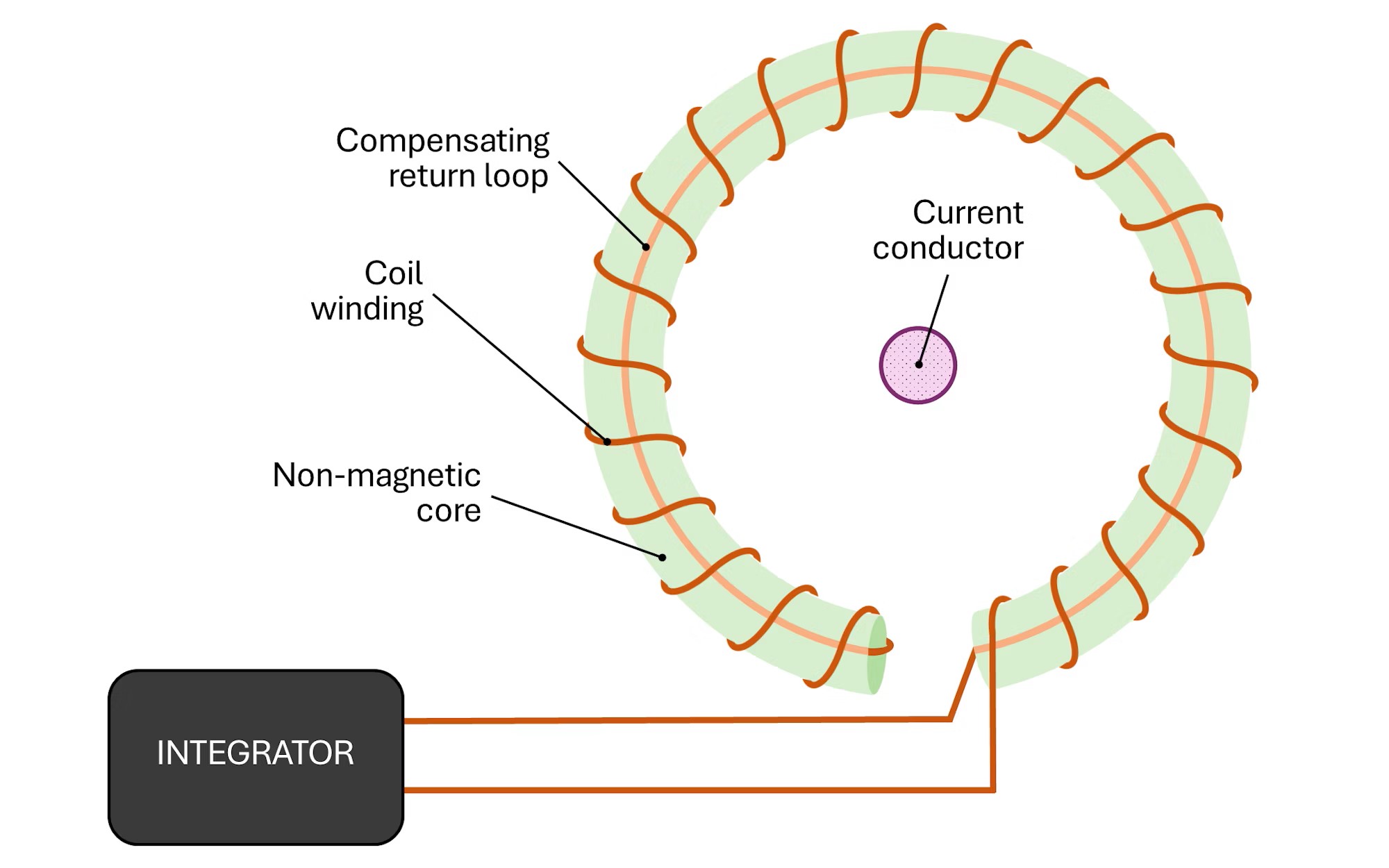
Operating principle of a Rogowski coil
The Rogowski coil works according to Faraday's law of induction: a changing magnetic field, caused by the current flow in the conductor surrounded by the coil, induces a voltage in it. This voltage is proportional to the derivative of the current over time:

*where M is the mutual inductance of the coil relative to the conductor.
To obtain the instantaneous current value, the signal from the coil must be integrated in the measurement path (either analog or digital). Key phenomena used in operation:
- electromagnetic induction (Faraday's law),
- superposition principle (for multi-conductor measurement systems),
- no magnetic coupling with a core (no saturation effect).
Why are PEM coils market leaders?
Rogowski coils from PEM (Power Electronic Measurements Ltd) are considered among the most accurate and stable solutions on the market. The company has been specializing exclusively in Rogowski coil technology for over 30 years, developing a range of innovative solutions:
RCT – industrial Rogowski coils for network monitoring
The RCT series is designed for operation in industrial environments. It offers:
- compliance with industrial standards,
- DIN rail mounting (easy integration with switchgear),
- digital communication via Modbus RTU interface, enabling remote parameter monitoring.
CWT – broadband coils for laboratory and power electronics applications
The CWT series includes precise probes with a wide frequency range – from low to very high:
- available in LF (Low Frequency) and HF (High Frequency) variants,
- bandwidth up to 30 MHz,
- option to choose between external or integrated integrator circuits.
CWT Mini / CWT UltraMini – miniature probes for local measurements
Designed for the most demanding and compact systems, the CWT Mini and UltraMini probes allow for:
- innovative measurement of through-hole components (THT),
- safe and precise measurements of semiconductor circuits (e.g., MOSFET, IGBT, SiC, GaN),
- installation in very limited spaces – e.g., directly on PCBs.
Why choose PEM coils?
PEM solutions stand out from the competition due to their unique design features and quality of workmanship:
- Measurement accuracy up to ±0.1%, achieved through individual calibration of each coil.
- No ferromagnetic core, eliminating issues of magnetic saturation and hysteresis.
- Wide frequency bandwidth – up to 30 MHz, depending on the model.
- Current measurement from a few milliamperes to hundreds of kiloamperes, including pulsed and high-frequency disturbances (HF).
- Flexible mechanical design – coils are lightweight, bendable, often with an openable structure.
- Compliance with international standards, including IEC 61010 and IEC 61869, ensuring safety and reliability.
Comparison with other current measurement methods
In engineering practice, various technologies are used for current measurement, each with its strengths and limitations. The Rogowski coil stands out due to its unique design and characteristics. Here's how it compares to other solutions:
Rogowski Coil
This is a coreless current transducer ideal for measuring alternating and pulsed currents. Its main advantages include:
- No saturation (because it does not contain a ferromagnetic core),
- Very wide frequency range, even up to tens of megahertz,
- Low weight and flexibility — can be installed even in hard-to-reach places,
- Safe, non-contact measurement (galvanic isolation).
Main limitation: it does not allow for direct measurement of the DC component, and the resulting voltage signal requires integration (analog or digital), which may increase the complexity of the measurement system.
Current Transformer (CT)
This traditional solution is primarily used in power engineering and AC current measurement systems. Main advantages include:
- Simple design and reliability,
- Good accuracy at power line frequencies (50/60 Hz),
- Low cost and wide availability.
Limitations include core saturation at high currents, limited frequency range (typically a few hundred Hz to a few kHz), and larger size and weight.
Shunt (measuring resistor)
A shunt is a precision resistor where the voltage drop is used to calculate the current value. Its advantages include:
- Measurement of both DC and AC,
- Very good accuracy at low currents,
- Direct integration with measurement electronics.
Its drawbacks are that the shunt must be inserted into the current circuit, which means no galvanic isolation, risk of thermal losses, and potential overheating at high currents.
Hall Effect Sensor
Hall sensors use the Hall effect to measure the magnetic field generated by the current, enabling measurement of both DC and AC currents. Additional advantages include:
- Full galvanic isolation,
- Compact form factor,
- Easy integration with digital systems.
Main disadvantages include lower accuracy compared to shunts or Rogowski coils, temperature sensitivity, and limitations in high-frequency signal measurement.
Conclusion
The Rogowski coil is best suited where the following are required:
- Measurement of high currents (pulsed or alternating),
- Wide measurement bandwidth,
- Lightweight, flexible, and non-contact installation,
- No issues with saturation or hysteresis.
However, for DC current measurement, high accuracy at low ranges, or simplicity of the system, other technologies may be more appropriate — each has its place in specific applications.
Rogowski coils are current transducers that, thanks to their coreless design, wide bandwidth, and high mechanical flexibility, are ideal for demanding measurement applications. Their ability to accurately reflect rapidly changing currents, immunity to saturation, and resistance to electromagnetic interference make them an ideal choice for power electronics, industrial automation, scientific research, renewable energy systems, and electromobility.
Although not a universal solution (e.g., they do not directly measure DC current), in many scenarios they outperform traditional current transformers, shunts, or Hall sensors – especially where dynamics, safety, and ease of installation matter most.
The choice of the right current measurement technology should always consider the characteristics of the measured signals and the operating environment — and the Rogowski coil may just be the missing link in a modern measurement system.
Related products
Related posts
 Now available – DC/DC converters from PREMIUM
Now available – DC/DC converters from PREMIUM
 New release in DACPOL lighting for lathes – Kira covers
New release in DACPOL lighting for lathes – Kira covers

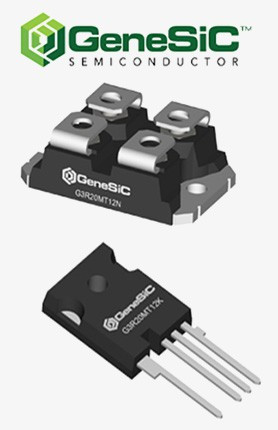
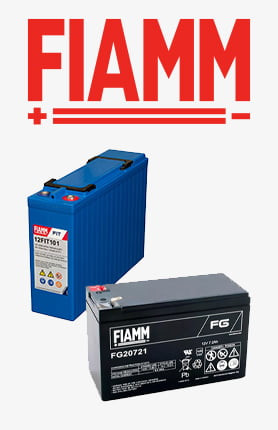
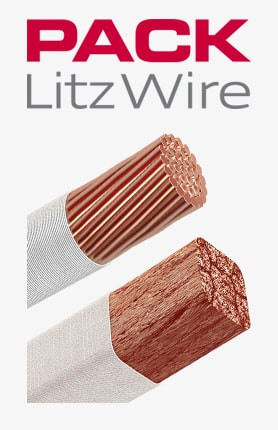
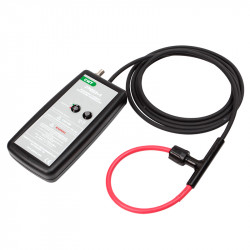
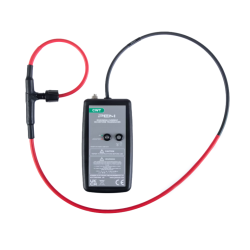
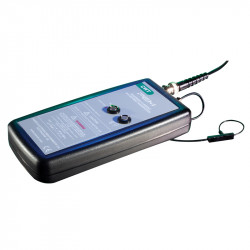
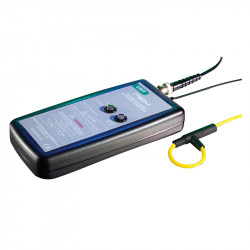
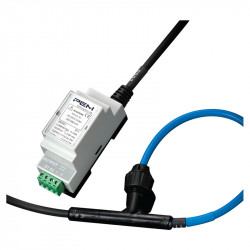
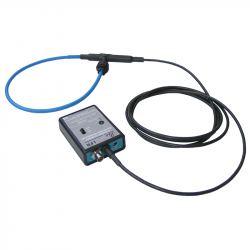
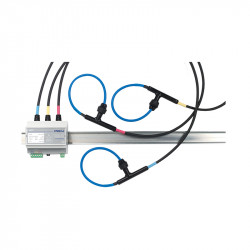
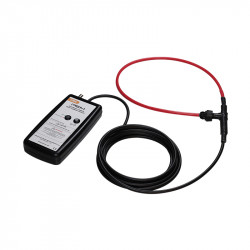
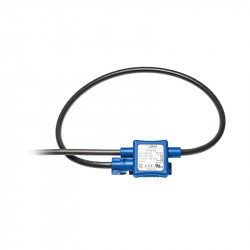

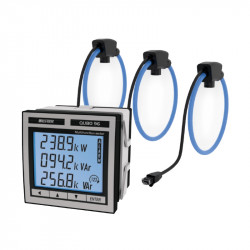

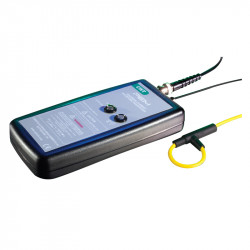
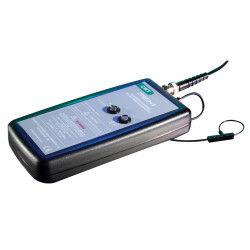
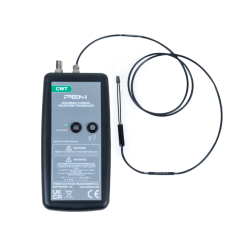
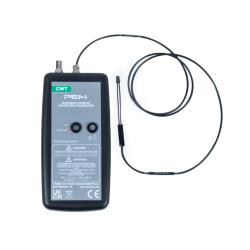
Leave a comment